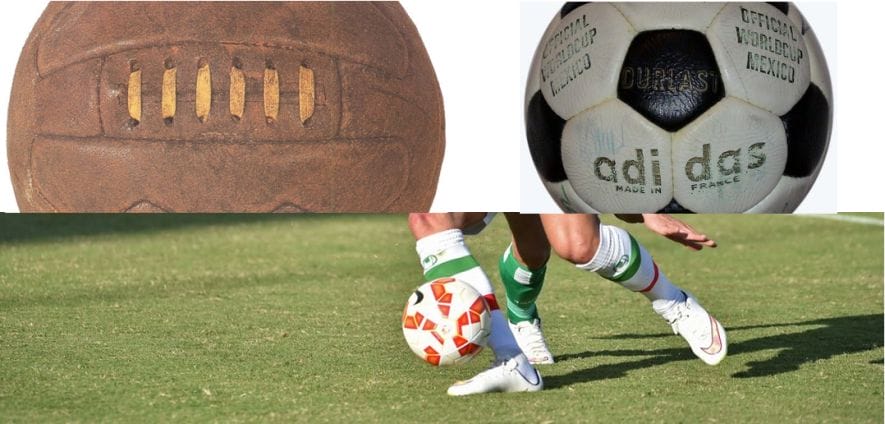Glory days for leather, at 1930 Football World Cup. In fact, in the prestigious world championship first edition, the ball was a leather tanning artwork: framework, manufactured in Argentina, was made with leather, while inner tube was made with porcine material and main seams had a leather small lace. As the following editions went on, alongside the ball technology, in terms of materials and manufacturing, kept up. Now, after the opening of 2018 Russia World Cup, we may browse through the gallery provided by digitaltrends.com to look back at the ball manufacturing evolution. The story dates back to 1934: the ball was, more or less, pretty much the same as 4 years before. Since the World Cup was taking place in Italy, Italian artisans were in charge of the ball making; on top of that, they replaced, in the main seam, the leather lace with a new one in cotton, especially to make headers less painful. They definitely solved the problem in 1938, in France, with the introduction of a valve, which enabled manufacturers to remove the lace itself. After the tournament disruption, owing to World War 2, broken out in 1939, the World Cup started again in 1950. The ball was rather different: in fact, they made it with lighter leather sheets and inward seams. During the following edition, in 1962, to ensure and foster the actual spherical shape of the ball, they made it with 18 leather panels, which replaced traditional sheets (12). In 1970, in Mexico, worldwide television networks supplied a full coverage, live, of the sport event, 1970 Football World Cup. Television was not the only breaking news though. As regards the ball, in fact, they did create an artwork, leather designed, bound to become the most popular ball in all of the following matches: that was Telstar, a brand new model with 32 black and white patches. Yet, that was also the swan song, so to speak, or it was nearly about to be. In other words, that was one of the last appearances of leather in the soccer ball: in fact, from 1986 onwards, they started using balls made with synthetics. This is just the first tale though. On the one hand, the official World Cup ball is without leather at this point; on the other hand, Iran’s national team players are without shoes. At the beginning of May, US President Donald Trump made public he was about to quit the agreement on nuclear weapons formerly signed with Iran; in addition to that, he also announced further economic restrictions against the country, starting from August. Therefore, Nike dissolved the supply contract previously signed with Iran’s football federation. Shoes that Iranian players were wearing yesterday, on the opening match they played vs. Morocco, have been bought and paid by themselves.
2018 Russia World Cup: a tale about a ball without leather and a national team without shoes











